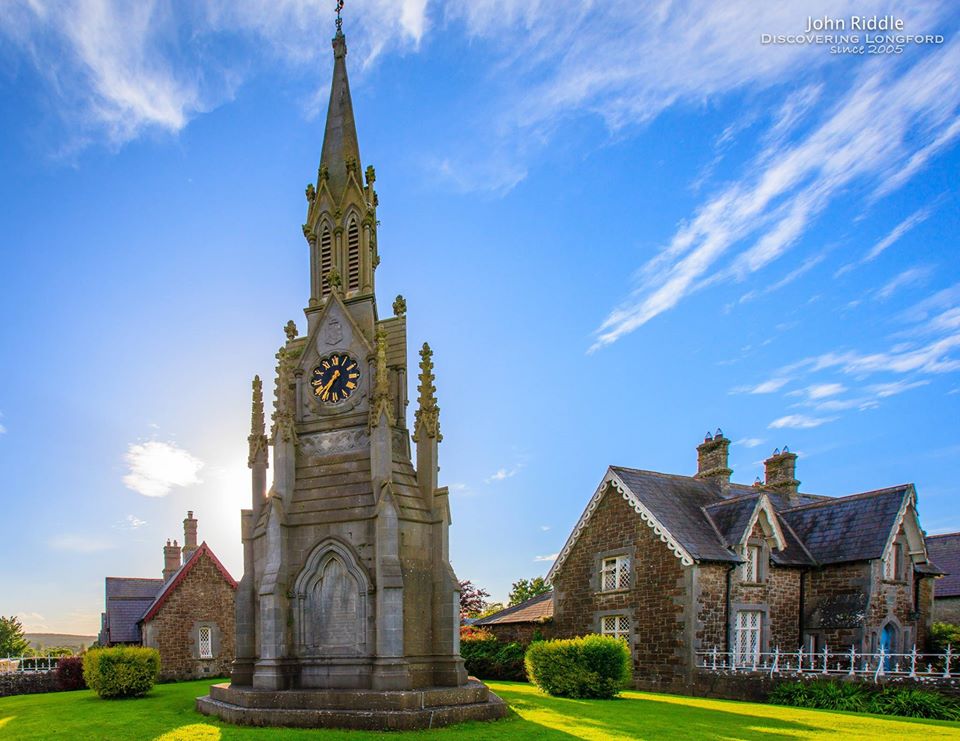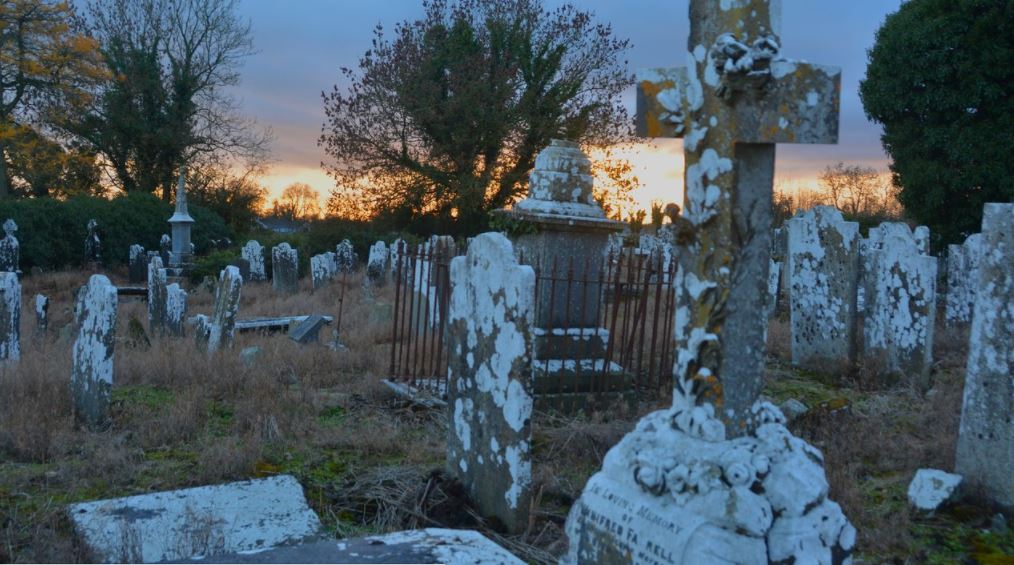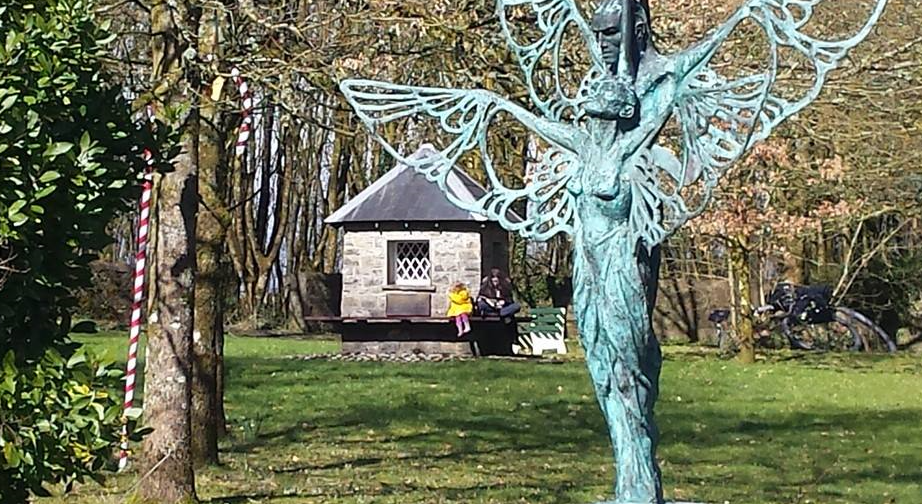Ardagh/Moydow
Ardagh (Irish: Árd Achadh, meaning high field) is a town in County Longford, Ireland about 10 km from Longford Town. It is located off the N4 road.The delicate combination of rustic houses and fine churches has given Ardagh a distinctive character. It is a character, which it cherishes and endeavours to enhance.In recent years its charm and architectural beauty have won high praise both at home and abroad and the village is three-time Supreme Winner of the prestigious National Tidy Towns Competition, claiming the title in 1989, 1996 and 1999. Ardagh is also the 1998 European Winner of the British Airways Tourism for Tomorrow Environmental Awareness Competition and in 1999 it was Overall Winner of the 32 county Ireland’s Best Kept Towns Competition. It has also claimed several other European Awards. This is a new chapter in the history of Ardagh and one that it looks forward to.
Moydow
Moydow is a picturesque village on the outskirts of Longford.It is a village steeped in cultural heritage and a proud sense of unity. The area consists of two pubs, a church and the main sporting activities in the area are provided by the local GAA club, Moydow Harpers.Moydow - (Magh Dumha) Anciently it was part of a territory known as Tethba. The barony was formed from the territories of Clanawlye (Ardagh & Moydow), and parts of the territories of Moybrawne (Taghshinny parish), Clanconnor (part Kilcommock, part Cashel parishes), and Muintergalgan.
History of Ardagh & Moydow
Ardagh

Clock tower in Ardagh village - photo by John Riddle
The early history of Ardagh begins a short distance outside the village at Bri Leith (pronounced Bree Laye). This forested hill was once a famous centre of pre-Christian religious worship. The importance of the hill, like Tara and Dun Aillnne, rested in the fact that it commanded extensive views over the surrounding countryside. With the coming of Christianity in the fifth century, the centre of religious worship moved away from Brí Leith to Ardagh itself. The name Ardagh, Árd Archadh in Irish, means the high field, which indicates that when St Mel first arrived here the area was unsettled, with lots of open ground on which to build. Only the legends of Aonghus, Midhir and Etain survive to remind us that this was a great religious centre at Bri Leith. An important relic, which survives from this earlier period is the crosier of St. Mel now preserved in Longford Cathedral Museum. It was much venerated throughout the Middle Ages and pilgrims came great distances to seek the intercession of the saint whose relics were preserved at Ardagh. From what we know of early monastic sites it is probable that the monastery of Ardagh covered an area as large as that of the present village but the only surviving remnant of this ancient monastery is a small stone oratory in the grounds of the Protestant parish church. We know little about the manner in which the early monastery developed during its first 600 years but by the twelfth century it was clearly the largest and most important settlement in Longford.While Ardagh’s importance declined with the coming of the Normans, a change in its fortunes was to occur with the arrival of a new family, the Fethersons. The Fetherstons made Ardagh their home and built the present Ardagh House sometime before 1745. It was at this time that one of the most famous incidents in Ardagh’s history occurred. This was the visit of the young Oliver Goldsmith who was fooled into mistaking the mansion (Ardagh House) for an Inn. His endeavours to court the Fetherston daughters in the belief that they were servant girls formed the plot of his most successful play, “She Stoops to Conquer”, a comedy which explores the contemporary themes of sexual morality and double standards. The enduring legacy of the Fetherstons, however, is the village of Ardagh itself.The village and estate were managed by Sir George Ralph Fetherston and his English wife Frances Solly from Essex. It was Sir George’s nephew, however, who was to have the most dramatic impact on Ardagh. He was Sir Thomas Fetherston and in 1862 he employed the Victorian architect John Rawson Carroll to improve the village as a memorial to his late uncle George.
The village is arranged around a triangular green bounded on the north by the grounds of Ardagh House and on the east by the Protestant parish church. Grouped to the south and west are the detached single and two storey cottages whose picturesque appearance gives Ardagh much of its charm. Ardaghs connection with the Fetherston family is also celebrated in many ways mainly by the Clock Tower Memorial in the village and the newly reconstructed Fetherston Stables attached to the familys former stately home, which are open to the public and well worth a visit. The Fetherston Mansion is now St. Brigids Training Centre under the auspices of the Sisters of Mercy. The Fetherston Courtyard is laid out on a grand scale and still retains the original design of the horse feeding and ventilation systems. Works of the local novelist Canon Guinan are displayed, including "The Patriots", episodes of which are said to be based on the life of General Sean MacEoin.
Moydow
Moydow - (Magh Dumha) Anciently it was part of a territory known as Tethba. The barony was formed from the territories of Clanawlye (Ardagh & Moydow), and parts of the territories of Moybrawne (Taghshinny parish), Clanconnor (part Kilcommock, part Cashel parishes), and Muintergalgan.Its ancient name was Cill-Modhint after St. Modhints church that was destroyed by fire in 1155. (St. Modhint died in 591) Also in this area are the ruins of the oldest nunnery in Ireland.Here is supposed to have been the abbey of Kilmliodain, of which St. Modan or Moduid "the Simple," who was bishop of Carnfurbuidhe, was abbot in 591. The parish comprises 45771 statute acres, of which about 1203 are bog : the land is in general good, and the state of agriculture improving. A peculiar kind of stone, called pudding stone, is found on the isolated mountain of Slieve Gouldry, on the southern confines of the parish; and there is a quarry of freestone, which is worked for flags.

The Church of Ireland is a small plain building without a tower, erected and repaired in 1831, by aid of a loan of £50 from the Board of First Fruits. In the R. C. divisions the parish forms part of the union of Ardagh, and has a chapel at Moydow.
Things To Do & See in Ardagh
Village Features
The focal point of the village green is the clock tower. Built during 1862-3, it commemorates Sir George Ralph Fetherston. Other features of interest here include the ‘Travellers Rest’ seat in the churchyard wall and the neat flowerbeds. The village courthouse was one of the buildings surrounding the village green. In the centre of the main green stands the village pump. A small but broad early church with antae and flat-headed doorway (partly reconstructed on a site said to have been founded by St Mel in the fifth century. During the course of excavations in 1967, traces of a timber church, possibly of eight-century date, were found beneath it.nnOn the road from the Rectory into the village stands the Demesne National School, which was built in 1892 and is now the Community Centre. Beyond this is a group of buildings that were built to the design of J. Rawson Carroll, during the mid-eighteen hundreds. The first was the old post office, the second was the house where all the rents were paid to the landlord’s agent and the third was the Royal Irish Constabulary barracks.
Ardagh House
Ardagh House, which is now a school, was originally owned by the Fetherston family. In 1744 Oliver Goldsmith visited here. The present building displays a typical early to mid-nineteenth century style. It was originally a three-storey building, but only two storeys survived a fire in 1949. The stable court at the side of the house was added during the nineteenth century. The estate walls surrounding Ardagh House were built mostly during the famine in the 1840s providing relief work for the local population. The gate lodge was used to control access to the estate. Ardagh House is used in the banner image on this page.
Ardagh Neighbourhood Park
Created during 1990, the Ardagh Park was the site of the first official planting of the sessile oak, the national tree of Ireland, by An Taoiseach Charles J. Haughey in March of that year. The park contains over two thousands broad-leaved trees.
St Bridgets Churchyard
This church of neo-gothic architectural style came out of the great building period of church architecture in post-emancipation Ireland. Built in 1881 to a design by William Hague, the brilliant pupil of the famous Agustus Welby Pugin. It incorporates Irish (Watson of Youghal) and German (Mayer of Munich) stained glass and furnishings in Irish and Italian marble. The altar and altar rail was built by James Pearse, who was father of the patriots Padraig and Willie Pearse, to the design of William Hague. Reliable authorities suggest that St Bridget’s is the most ornate of William Hague’s churches. The presbytery built in complementary style was added some years later. Recently the church has been extensively renovated.
Creative Ardagh

Learn about Irish mythology, early Christianity, local writers and life 100 years ago at Ardagh Heritage and Creativity Centre. Create art, explore your creativity and be inspired. This welcoming, quaint and curious centre is in an old schoolhouse built in 1898. Take in an exciting exhibition and discover the rich fabric of Ardagh life down through the ages, from the roots of the village in Irish mythology to its development as an important early church site. They host family events, creativity mornings, group classes, and drop-in art days. Browse in their craft shop and buy locally produced pieces. They stock a wide range of work by very creative people from Longford, Westmeath, Leitrim, Cavan and Roscommon. Handmade ceramics, soaps, crochet, stonework, paintings and jewellery are just some of the beautiful products available. For more information see Creative Ardagh.



